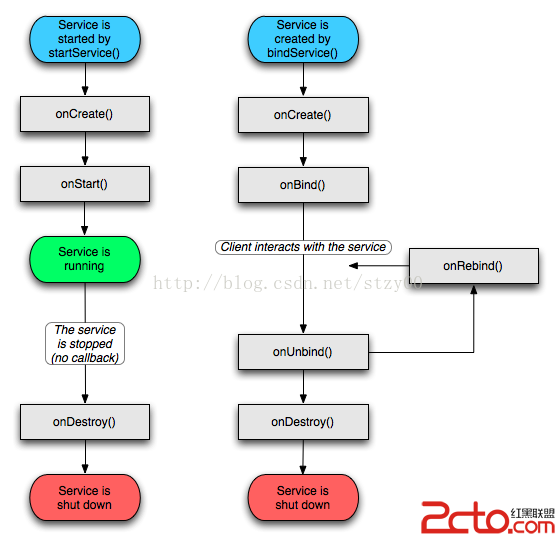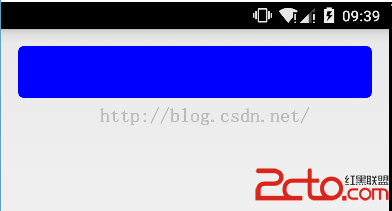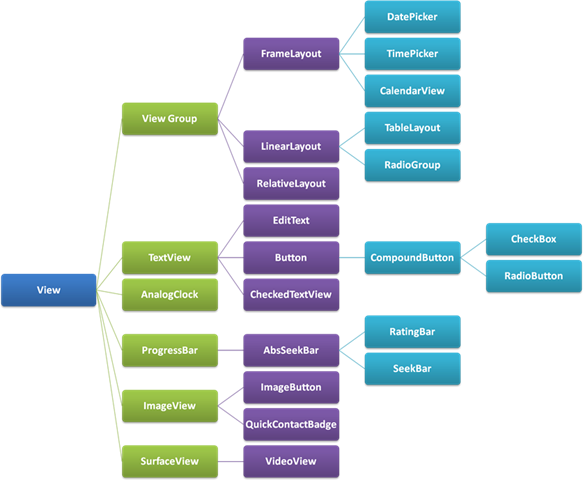編輯:關於Android編程
本文實例總結了Android編程加密算法。分享給大家供大家參考,具體如下:
android常用加密算法之Base64加密算法:
package com.long;
/**
* Copyright (C) 2010 The Android Open Source Project
*
* Licensed under the Apache License, Version 2.0 (the "License");
* you may not use this file except in compliance with the License.
* You may obtain a copy of the License at
*
* http://www.apache.org/licenses/LICENSE-2.0
*
* Unless required by applicable law or agreed to in writing, software
* distributed under the License is distributed on an "AS IS" BASIS,
* WITHOUT WARRANTIES OR CONDITIONS OF ANY KIND, either express or implied.
* See the License for the specific language governing permissions and
* limitations under the License.
*/
import java.io.ByteArrayOutputStream;
import java.io.IOException;
import java.io.OutputStream;
/*
* @author long
*
*/
public class Base64 {
private static final char[] legalChars = "ABCDEFGHIJKLMNOPQRSTUVWXYZabcdefghijklmnopqrstuvwxyz0123456789+/"
.toCharArray();
public static String encode(byte[] data) {
int start = 0;
int len = data.length;
StringBuffer buf = new StringBuffer(data.length * 3 / 2);
int end = len - 3;
int i = start;
int n = 0;
while (i <= end) {
int d = ((((int) data[i]) & 0x0ff) << 16)
| ((((int) data[i + 1]) & 0x0ff) << 8)
| (((int) data[i + 2]) & 0x0ff);
buf.append(legalChars[(d >> 18) & 63]);
buf.append(legalChars[(d >> 12) & 63]);
buf.append(legalChars[(d >> 6) & 63]);
buf.append(legalChars[d & 63]);
i += 3;
if (n++ >= 14) {
n = 0;
buf.append(" ");
}
}
if (i == start + len - 2) {
int d = ((((int) data[i]) & 0x0ff) << 16)
| ((((int) data[i + 1]) & 255) << 8);
buf.append(legalChars[(d >> 18) & 63]);
buf.append(legalChars[(d >> 12) & 63]);
buf.append(legalChars[(d >> 6) & 63]);
buf.append("=");
} else if (i == start + len - 1) {
int d = (((int) data[i]) & 0x0ff) << 16;
buf.append(legalChars[(d >> 18) & 63]);
buf.append(legalChars[(d >> 12) & 63]);
buf.append("==");
}
return buf.toString();
}
private static int decode(char c) {
if (c >= 'A' && c <= 'Z')
return ((int) c) - 65;
else if (c >= 'a' && c <= 'z')
return ((int) c) - 97 + 26;
else if (c >= '0' && c <= '9')
return ((int) c) - 48 + 26 + 26;
else
switch (c) {
case '+':
return 62;
case '/':
return 63;
case '=':
return 0;
default:
throw new RuntimeException("unexpected code: " + c);
}
}
public static byte[] decode(String s) {
ByteArrayOutputStream bos = new ByteArrayOutputStream();
try {
decode(s, bos);
} catch (IOException e) {
throw new RuntimeException();
}
byte[] decodedBytes = bos.toByteArray();
try {
bos.close();
bos = null;
} catch (IOException ex) {
System.err.println("Error while decoding BASE64: " + ex.toString());
}
return decodedBytes;
}
private static void decode(String s, OutputStream os) throws IOException {
int i = 0;
int len = s.length();
while (true) {
while (i < len && s.charAt(i) <= ' ')
i++;
if (i == len)
break;
int tri = (decode(s.charAt(i)) << 18)
+ (decode(s.charAt(i + 1)) << 12)
+ (decode(s.charAt(i + 2)) << 6)
+ (decode(s.charAt(i + 3)));
os.write((tri >> 16) & 255);
if (s.charAt(i + 2) == '=')
break;
os.write((tri >> 8) & 255);
if (s.charAt(i + 3) == '=')
break;
os.write(tri & 255);
i += 4;
}
}
}
android常用加密算法之AES加密算法:
package com.long;
import java.security.SecureRandom;
import javax.crypto.Cipher;
import javax.crypto.KeyGenerator;
import javax.crypto.SecretKey;
import javax.crypto.spec.SecretKeySpec;
/**
* AES加密解密算法
*
* @author long
*
*/
public class Encryption {
private final static String HEX = "0123456789ABCDEF";
public static String encrypt(String seed, String cleartext)
throws Exception {
byte[] rawKey = getRawKey(seed.getBytes());
byte[] result = encrypt(rawKey, cleartext.getBytes());
return toHex(result);
}
public static String decrypt(String seed, String encrypted)
throws Exception {
byte[] rawKey = getRawKey(seed.getBytes());
byte[] enc = toByte(encrypted);
byte[] result = decrypt(rawKey, enc);
return new String(result);
}
private static byte[] getRawKey(byte[] seed) throws Exception {
KeyGenerator kgen = KeyGenerator.getInstance("AES");
SecureRandom sr = SecureRandom.getInstance("SHA1PRNG");
sr.setSeed(seed);
kgen.init(128, sr); // 192 and 256 bits may not be available
SecretKey skey = kgen.generateKey();
byte[] raw = skey.getEncoded();
return raw;
}
private static byte[] encrypt(byte[] raw, byte[] clear) throws Exception {
SecretKeySpec skeySpec = new SecretKeySpec(raw, "AES");
Cipher cipher = Cipher.getInstance("AES");
cipher.init(Cipher.ENCRYPT_MODE, skeySpec);
byte[] encrypted = cipher.doFinal(clear);
return encrypted;
}
private static byte[] decrypt(byte[] raw, byte[] encrypted)
throws Exception {
SecretKeySpec skeySpec = new SecretKeySpec(raw, "AES");
Cipher cipher = Cipher.getInstance("AES");
cipher.init(Cipher.DECRYPT_MODE, skeySpec);
byte[] decrypted = cipher.doFinal(encrypted);
return decrypted;
}
public static String toHex(String txt) {
return toHex(txt.getBytes());
}
public static String fromHex(String hex) {
return new String(toByte(hex));
}
public static byte[] toByte(String hexString) {
int len = hexString.length() / 2;
byte[] result = new byte[len];
for (int i = 0; i < len; i++)
result[i] = Integer.valueOf(hexString.substring(2 * i, 2 * i + 2),
16).byteValue();
return result;
}
public static String toHex(byte[] buf) {
if (buf == null)
return "";
StringBuffer result = new StringBuffer(2 * buf.length);
for (int i = 0; i < buf.length; i++) {
appendHex(result, buf[i]);
}
return result.toString();
}
private static void appendHex(StringBuffer sb, byte b) {
sb.append(HEX.charAt((b >> 4) & 0x0f)).append(HEX.charAt(b & 0x0f));
}
}
Android常用加密算法之RAS加密算法:
import java.security.Key;
import java.security.KeyFactory;
import java.security.KeyPair;
import java.security.KeyPairGenerator;
import java.security.PrivateKey;
import java.security.PublicKey;
import java.security.interfaces.RSAPrivateKey;
import java.security.interfaces.RSAPublicKey;
import java.security.spec.PKCS8EncodedKeySpec;
import java.security.spec.X509EncodedKeySpec;
import javax.crypto.Cipher;
import sun.misc.BASE64Decoder;
import sun.misc.BASE64Encoder;
public class RSAHelper {
public static PublicKey getPublicKey(String key) throws Exception {
byte[] keyBytes;
keyBytes = (new BASE64Decoder()).decodeBuffer(key);
X509EncodedKeySpec keySpec = new X509EncodedKeySpec(keyBytes);
KeyFactory keyFactory = KeyFactory.getInstance("RSA");
PublicKey publicKey = keyFactory.generatePublic(keySpec);
return publicKey;
}
public static PrivateKey getPrivateKey(String key) throws Exception {
byte[] keyBytes;
keyBytes = (new BASE64Decoder()).decodeBuffer(key);
PKCS8EncodedKeySpec keySpec = new PKCS8EncodedKeySpec(keyBytes);
KeyFactory keyFactory = KeyFactory.getInstance("RSA");
PrivateKey privateKey = keyFactory.generatePrivate(keySpec);
return privateKey;
}
public static String getKeyString(Key key) throws Exception {
byte[] keyBytes = key.getEncoded();
String s = (new BASE64Encoder()).encode(keyBytes);
return s;
}
public static void main(String[] args) throws Exception {
KeyPairGenerator keyPairGen = KeyPairGenerator.getInstance("RSA");
//密鑰位數
keyPairGen.initialize(1024);
//密鑰對
KeyPair keyPair = keyPairGen.generateKeyPair();
// 公鑰
PublicKey publicKey = (RSAPublicKey) keyPair.getPublic();
// 私鑰
PrivateKey privateKey = (RSAPrivateKey) keyPair.getPrivate();
String publicKeyString = getKeyString(publicKey);
System.out.println("public:\n" + publicKeyString);
String privateKeyString = getKeyString(privateKey);
System.out.println("private:\n" + privateKeyString);
//加解密類
Cipher cipher = Cipher.getInstance("RSA");//Cipher.getInstance("RSA/ECB/PKCS1Padding");
//明文
byte[] plainText = "我們都很好!郵件:@sina.com".getBytes();
//加密
cipher.init(Cipher.ENCRYPT_MODE, publicKey);
byte[] enBytes = cipher.doFinal(plainText);
//通過密鑰字符串得到密鑰
publicKey = getPublicKey(publicKeyString);
privateKey = getPrivateKey(privateKeyString);
//解密
cipher.init(Cipher.DECRYPT_MODE, privateKey);
byte[]deBytes = cipher.doFinal(enBytes);
publicKeyString = getKeyString(publicKey);
System.out.println("public:\n" +publicKeyString);
privateKeyString = getKeyString(privateKey);
System.out.println("private:\n" + privateKeyString);
String s = new String(deBytes);
System.out.println(s);
}
}
希望本文所述對大家Android程序設計有所幫助。
 android四大組件之Service和子類IntentService
android四大組件之Service和子類IntentService
四大組件中, Service跟Activity的生命周期非常類似,它也是可執行的.甚至可看做是沒有界面的Activity, 因為它的運行,用戶並不會像Act
 Drawable資源的初步使用
Drawable資源的初步使用
剛開始接觸到Android的時候,看到類似下面的一個Button:當時感覺這樣的button有點像Material Design風格,真的以為是裁剪好的圖片,好奇心驅使我
 Android樹形控件繪制方法
Android樹形控件繪制方法
前言作為一個開發者,日常會接觸到很多優秀的軟件,其實,或多或少會有這樣的想法,我能不能開發一個自己軟件,甚至辦公軟件都希望是Markdown的文本,為何用office?我
 Android 面試題總結之Android 進階(一)
Android 面試題總結之Android 進階(一)
掌握什麼是View? View 坐標的基本概念 View的生命周期 如何自定義View什麼是View?android.app.View 就是手機的UI,View 負責繪制